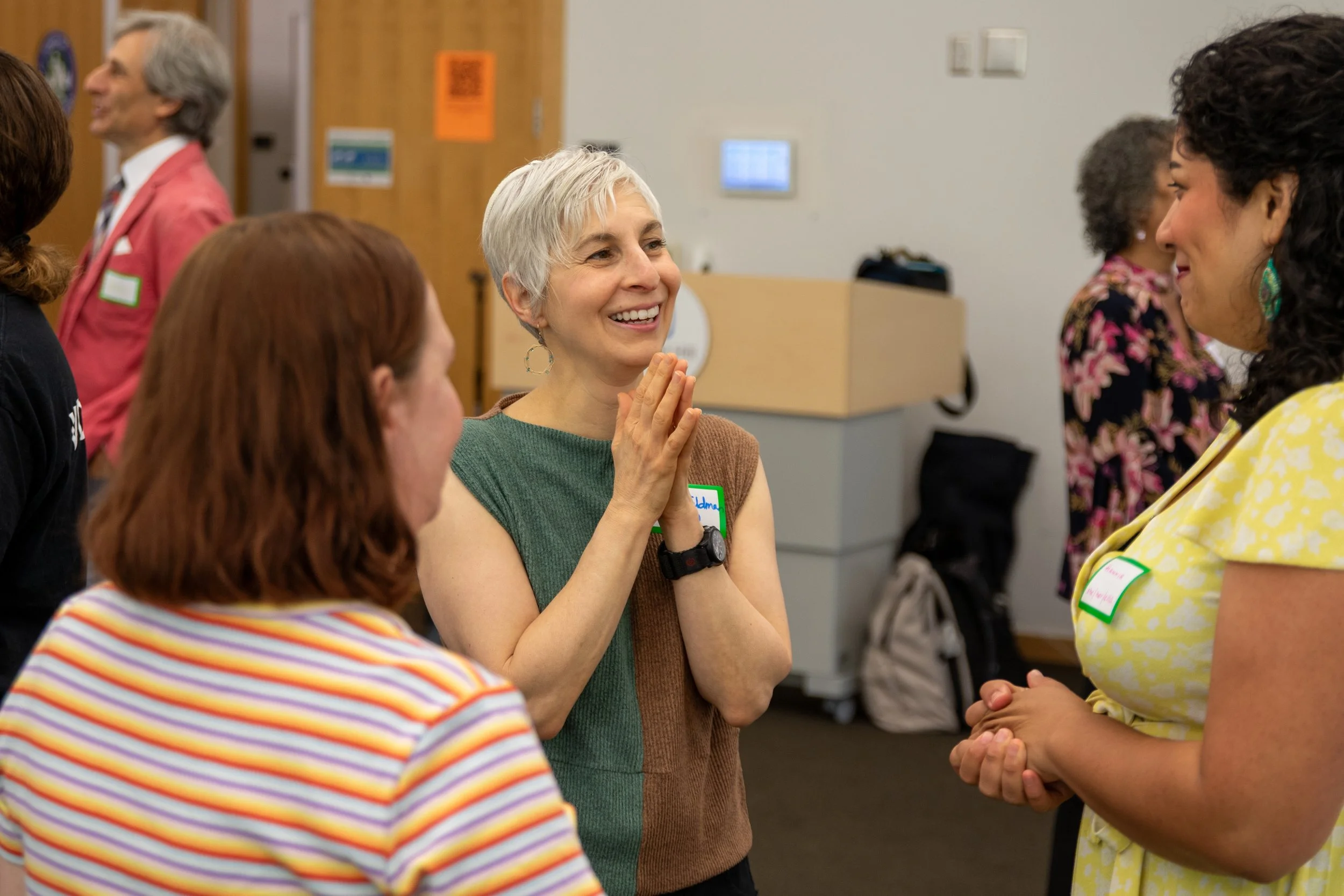5 Tips to Become a More Compassionate Listener
An old Turkish proverb goes something like this: “If speaking is silver, then silence is gold.” In other words, listening is gold. It’s the foundation of all intergroup and interfaith dialogue.
Our ability to understand one another begins with listening. It is impossible to have authentic and deep multi-faith relationships without truly listening to one another.
How do we do that? How do we learn to listen?
The short answer is with compassionate listening. And compassionate listening is both active and empathetic.
Choose to listen.
Nothing will be more helpful in trying to actively listen to others than beginning by assuming you can listen better. Listening is something you must choose to do. It can’t happen subconsciously. It invites us to be fully present in the conversation.
Very few people begin an interaction with the intent to not listen. And most of us will even think we are fully listening to the other person when we are really just hearing them. Being able to hear what someone said and repeat back is just the start of a deeper level of listening.
We all do this. That’s okay. But we want to learn to take it to the next step.
“Active listening includes eye contact as well as verbal and non-verbal acknowledgments that you are listening…. Empathy involves reflection, validation and a genuine concern for how another is thinking or feeling,” writes Holly Tiret of Michigan State University Extension. It’s listening where the listener pays attention to their listening.
Listening is something that requires effort and intent. If we begin our dialogues and conversations with the intent to listen rather than the assumption that we are listening, we will already be well on our way to growing as listeners.
Withhold judgements, ask questions instead.
One practical way choosing to listen might look is by trading in judgements for attentiveness and a desire to understand.
What the other shares is rarely about us. Judgements, advice, and comments often turn the conversation back to us. This is not a model of deep listening. The Center for Creative Leadership recommends “Keep an open mind. Rather than evaluating the message and offering an opinion, simply make the speaker feel heard and validated.”
Center the experiences of the other in your questions.
When we listen the best we can, we often ask questions. As you try to listen empathetically and actively in your conversations, it may help to think about questions you want to ask about what the other person is sharing. To ask better questions, you can try the following:
Ask yourself questions about your own question before asking.
Bring a spirit of genuine curiosity.
Ask why and how questions more than yes or no questions.
Be creative and be yourself.
This clip of Sadness comforting Bing Bong in Pixar’s Inside Out shows how powerful it can be to sit with someone in their emotions, to recognize and try your best to empathize with their feelings, and then to respond with curiosities that invite further sharing and emotions reflection.
Which of these tips for asking better questions do you see Sadness implementing?
Eliminate distractions.
Have you ever been in a conversation where you felt like you cared a lot more about the conversation than the other person did? It isn’t fulfilling. The experience can make you feel unheard, unlistened to, and even unimportant.
The easiest way to begin to listen to each other better is by putting away distractions. Sometimes this needs to be literally: no phones, no laptops, stop fidgeting. Other times it will be mentally: pay attention to the conversation and find something you’re genuinely curious about instead of letting your mind wander to your dinner or the big game you’re excited about.
And, while it’s important to leave space for questions, if they do not authentically arise, we may find ourselves searching for questions and distracted with our need to respond so much that we can actually distract from our dialogue partner.
If nothing arises, that’s okay! It’s better to listen the best you can than to be distracted with our response.
Clarify when needed.
Did you miss a word? Don’t be embarrassed to ask what they said! Is there a name they used that you were unsure of? Don’t be shy to ask them to repeat it.
Asking for clarity is helpful for both your own understanding of the conversation and how you respond, and also for the other person’s feeling of being listened to. It shows that you cared enough to make sure you heard them correctly and that you’re not missing any part of the conversation.
And that’s what compassionate listening comes down to: communicating you are engaged, interested, and care about your conversation partner.

